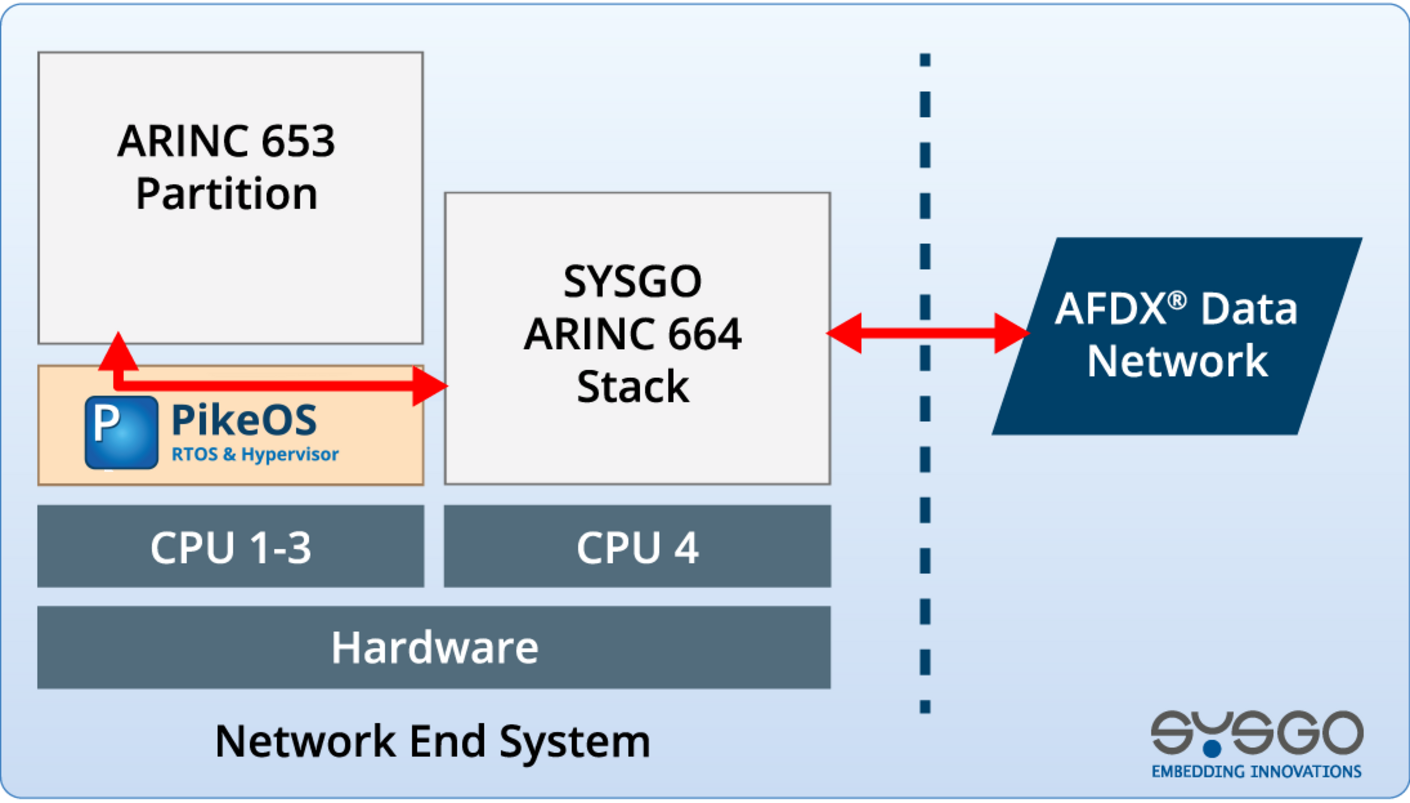Quality of Service (QoS)
AFDX supports strict prioritization of data flows to ensure that time-critical messages are delivered ahead of non-critical traffic. This guarantees predictable behavior, even under high network load — a key requirement in flight systems.
Guaranteed Bandwidth
Each virtual link in AFDX is configured with fixed bandwidth allocation. This ensures that every critical function receives its dedicated transmission capacity, preventing packet loss or delay due to congestion.
Deterministic Message Delivery
Unlike traditional Ethernet, AFDX enforces deterministic timing and bounded latency. Messages are transmitted with fixed timing constraints, allowing certified real-time operation and enabling DO-178C compliance in Safety-critical applications.
DO-178C certifiable to DAL A
Designed for Safety-critical Avionics systems, the AFDX stack is certifiable up to the highest Design Assurance Level (DAL A)
Built-In Test Equipment (BITE)
Includes integrated self-test functionality for fault detection, diagnostics, and system health monitoring — essential for certifiable Avionics environments
Ready-to-use Reference Integrations
Pre-integrated for both bare-metal platforms and PikeOS-based configurations, simplifying evaluation, prototyping, and certification paths
Optimized for Lightweight critical Systems
Example: Landing gear or brake controllers
- Minimal number of virtual links
- Avoids full-stack certification complexity
- Tailored, certifiable lightweight implementation
Ruggedized Hardware Integration
Example: Jet engine environments
- Software stack ported to custom embedded hardware
- Ideal when FPGAs/ASICs fail environmental or EMI (electromagnetic interference) specs
Legacy Protocol Integration
Example: Data concentrators
- Bridges legacy buses (e.g. CAN, ARINC 429) to AFDX networks
- Pre-processing included in software
- Runs on high-performance boards for real-time adaptation
Ground-Based Data Loading
Example: Maintenance or software updates
- Operates in low-DAL mode
- Utilizes host CPU resources during ground operations
- Reduces hardware cost and complexity
Energy-efficient Avionics Platforms
Example: Modular mission computers or integrated cockpit systems
- Software runs on COTS boards under PikeOS
- Shared memory interface between AFDX stack and applications
- ARINC 653 APIs (e.g. queuing/sampling ports) provide deterministic access
- Enables multi-guest OS access to the aircraft network (e.g. graphical cockpit, Fly-by-Wire control)



